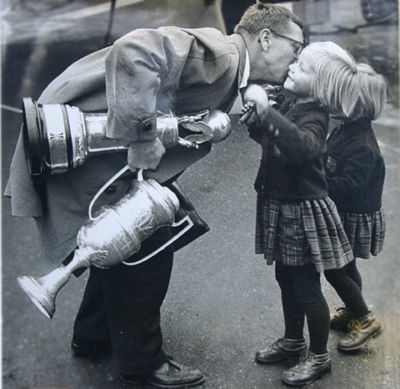
Paul Elvstrøm etched his name in Olympic history by clinching four consecutive Olympic gold medals in sailing from 1948 to 1960. This incredible feat still holds legendary status today and it was the genesis of a career which made an indelible mark on the history of the sport.
The breakthrough win
Paul Elvstrøm made his way to his first Olympic entry in 1948. At the age of just 20, he secured his first Olympic participation. This was in the Firefly, but Elvstrøm did not have a Firefly available before going to the Olympics – and not having the right dinghy available was just one of the issues he faced. Having the chance to prepare in the right way was another.
In short; Elvstrøm had to find a way. This being the late 40’s, it was highly unusual for an apprentice to ask for time off.
Yet, Paul did. He asked for a week to practice ahead of the Olympics, and despite what would be the norm, he got it. Being given the go-ahead, he practiced flat-out for a week in a National. It was by no means a Firefly. But it held some similarities to the Firefly, and to Paul, it would always feel a million times better to arrive to compete in Torquay with some preparation and experience – albeit not the ideal one.
And even though he did not have a Firefly available, he still did get some preparation in.
What the 20-year-old then went on to do is history. Elvstrøm won the gold in Torquay and started a legendary streak of Olympic wins.
Paul Elvstrøm came back after a slightly weavy start to the event. But he managed to get back up to speed, and ended up winning the Olympics on his debut. It was an event from which he took many vital lessons – and already the day after his first Olympic gold, he set sights on the next;
Four years later.
Optimise, practice, optimise
If the London Olympics of 1948 had taught him one lesson, it was that he had to master the balance of the dinghy to optimise the performance of it. This was at a time where the hanging technique was unused, and where the typical fast guy in a dinghy was bulky and heavy.
Paul Elvstrøm wasn’t. But he realised that there was a lot of potential in getting the hanging technique right. And as he found out, it also came in handy as it counteracted the initial advantage of his heavier competitors.
The following Olympic Games in Helsinki in 1952 provided vital changes. First of all, the Olympic class structure in sailing had some changes which led to the introduction of the Finn.
The Finn proved very successful indeed. Actually, it featured on the Olympic programme from 1952 and all the way to Tokyo 2020, where it last featured. For Paris 2024, it is set to be replaced by new events.
The early superstar of the class was, however, Elvstrøm. Paul Elvstrøm set to work preparing for the next Olympic Game, and when the decision on the Finn was made, Elvstrøm obtained his first one by 1951.
As the Olympics in Helsinki dawned, Elvstrøm was well-prepared and made the most of the event.
Four years of full focus and practice eventually paid off, and in total, Paul Elvstrøm won the event in strong fashion – and by a points difference of over 3.000 points.

Setting up business
Busy years followed his second Gold, and in-between the win in Helsinki and the following Olympic Game in Australia in the winter of 1956, Elvstrøm had plenty to do.
Outside the sport, he most notably made a switch of jobs. Elvstrøm quit bricklaying and teamed up with a friend to become independent with Elvström Dinghy Sails – the company that is Elvstrøm Sails today. And besides starting and running his own sail loft starting in 1954, Paul Elvstrøm kept a high level in the sport, too.
In 1956, the Olympics made it to Melbourne and Australia. The second appearance for the Finn in the Olympic tournament was not an easy start for Paul Elvstrøm. The reigning champion had a troubled start after winning race 1. In races 2 and 3, he faced various technical difficulties in the first three races in Australia. Then, at halfway, his luck took a turn for the better, and after winning the remaining races 5, 6, and 7, Elvstrøm landed the hattrick and won his third gold in a row.
The mid- to late 50’s was full of very strong seasons for Paul Elvstrøm, and it also led him to his final Olympic victory as he did the 1960 Olympics in Rome.
In the lead-up to the 1960 Olympics, Elvstrøm won lots of notable victories in a range of classes – including two World Championship victories in 505 in 1957 and 1958 plus Finn Gold Cup wins in 1958 and 1959 as well as the 1959 World Championship in Snipe.
Sailing was not in Rome, but in Naples, and here Elvstrøm managed to turn the tables after a tough start to the event. He eventually was back on the pace and secured the lead – just to fall ill ahead of the final race of the event. This did not mean much, however. Elvstrøm had secured the Gold before the seventh and final outing turned out to be a non-starter for him. This was also the conclusion to a remarkable Olympic hattrick in the Finn – and his fourth consecutive gold.